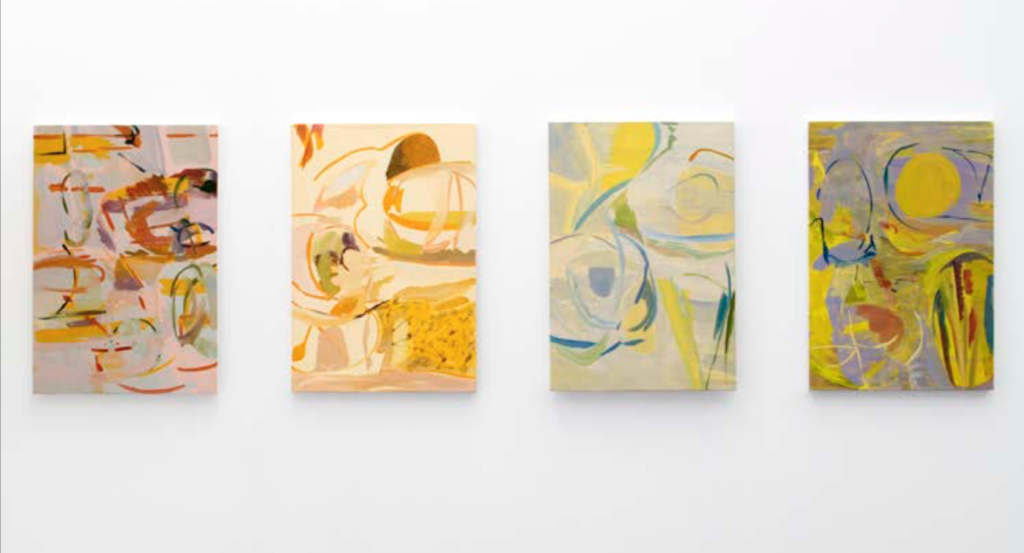Wendy Mclean, a Teaching Fellow in Studio Art at Reading, led a fun and interactive workshop about creativity, ideation, and process in today’s Baseline shift event. The aim of this workshop was to get us graphic designers thinking outside of the box and analysing objects in depth through different methods of thinking. As designers we are often constrained to think in a certain way and we can feel limited in our approaches to design. This workshop encouraged us to explore thinking strategies and methods of observation that we do not usually adopt in our studies or practice. As stated by Emily Nash in Part 1:
‘It was a very interactive workshop that helped us break away from the way graphic designers think and interact with colour, texture and form. It was interesting to see an artist’s point of view.’
Creative ideation processes
Before beginning the workshop Wendy introduced us to some of the work she is interested in and the psychological ideation that artists come across when creating these artworks. The first painting Wendy presented us with was Mary Heilmann’s Save the last dance for me. She observed that although paintings never move, they can create the optical illusion that portrays a quality of motion.
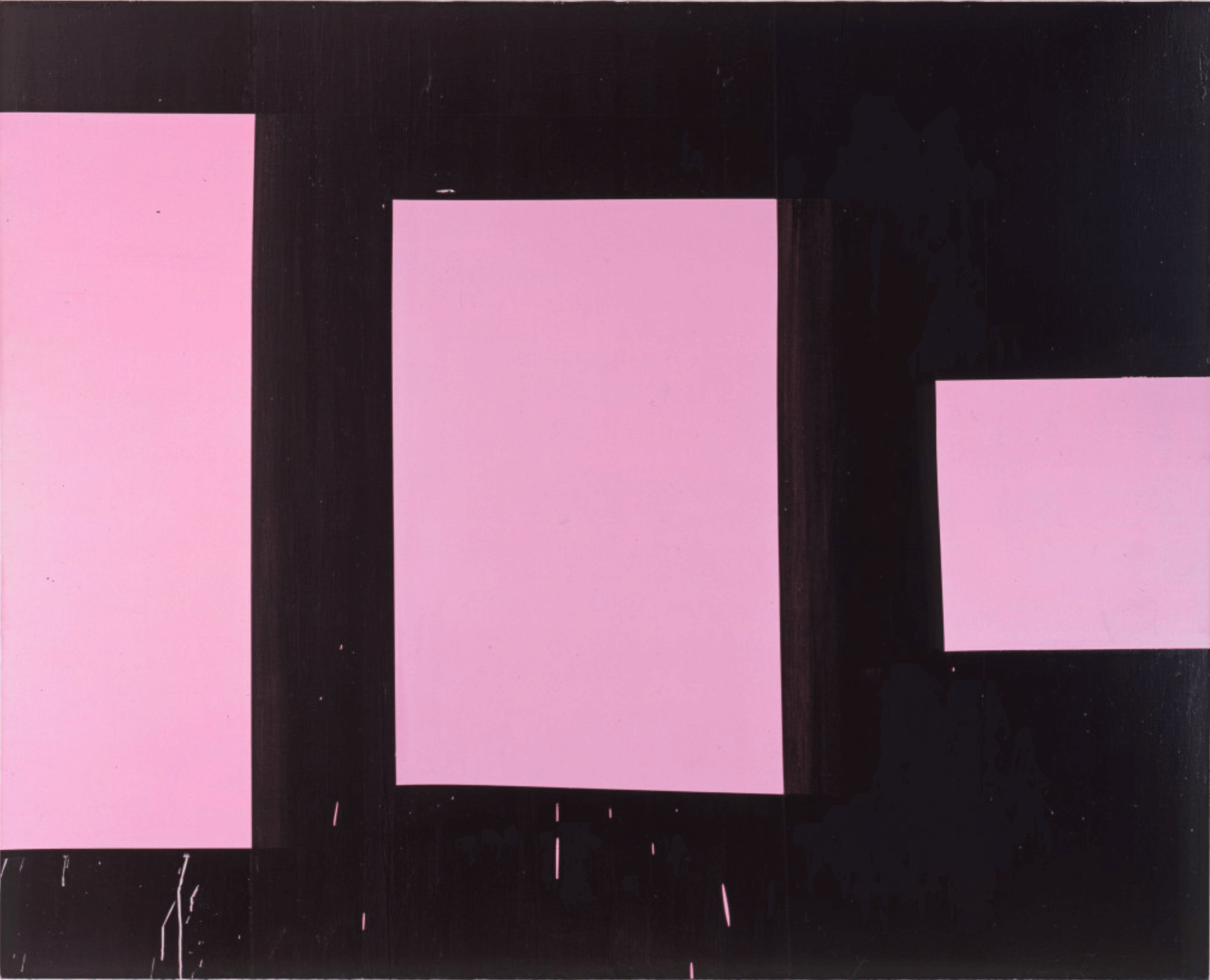
To help us visualise these psychological concept she showed us some of her own work. She revealed what the inside of her studio looks like, and talked us through some of her own paintings.
Her interest in the gaps between units in a painting and the abstract methods of psychology used in her Man at devils backbone painting were all extremely eye opening and helped us think of different ways to approach creativity and come up with ideas for different projects. Wendy further explained the ideation behind her paintings by explaining the different modes of thinking: fast thinking or intuition and slow thinking which is an analytical approach. She described how artists use these two approaches to assess their work. We got the point that an awareness of our type of thinking will help us understand our actions. Wendy stated that:
‘Within painting I slow down to not accept the first intuitive and impulsive idea. I slow down to query my attraction to it ‘.
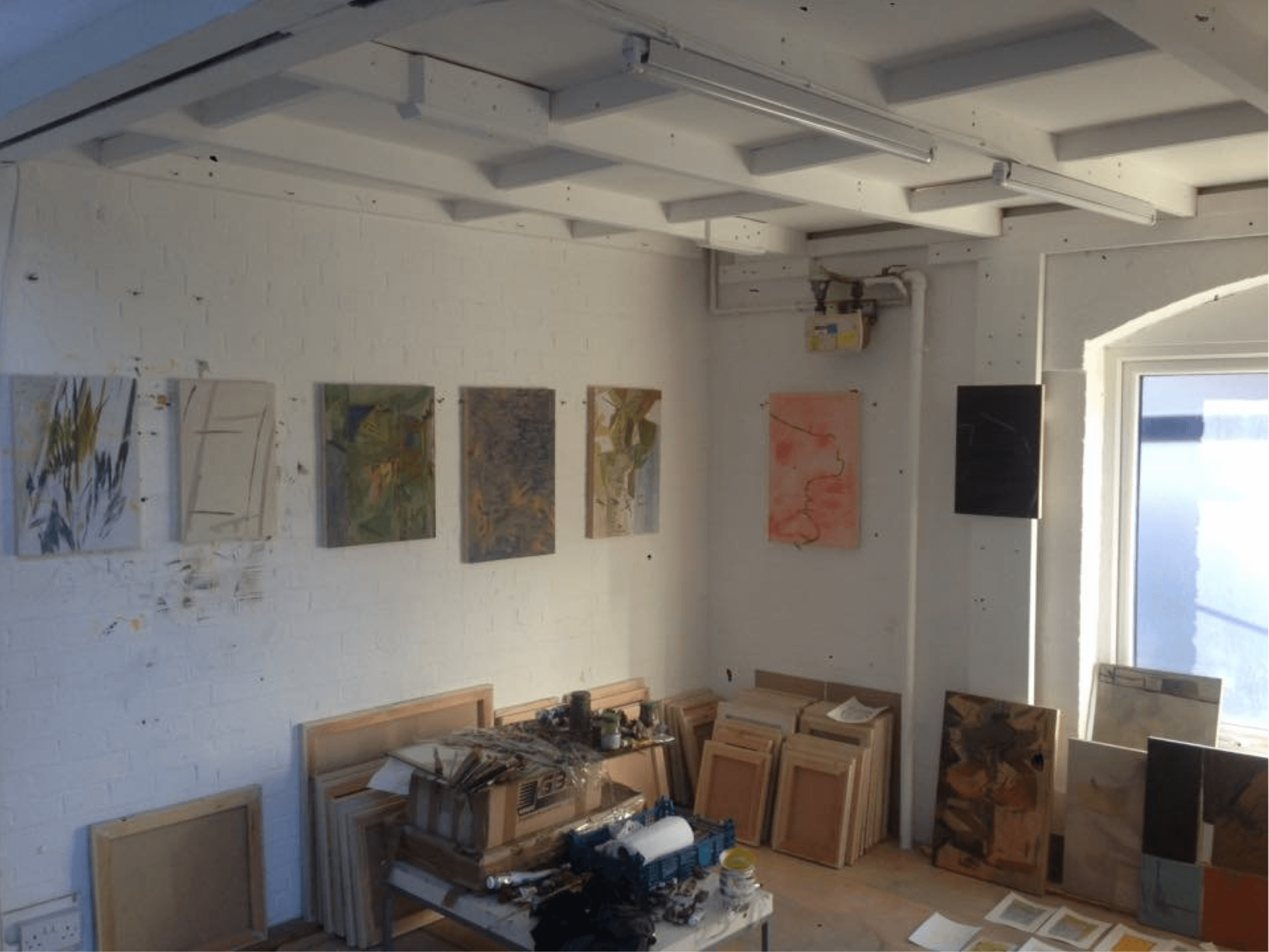
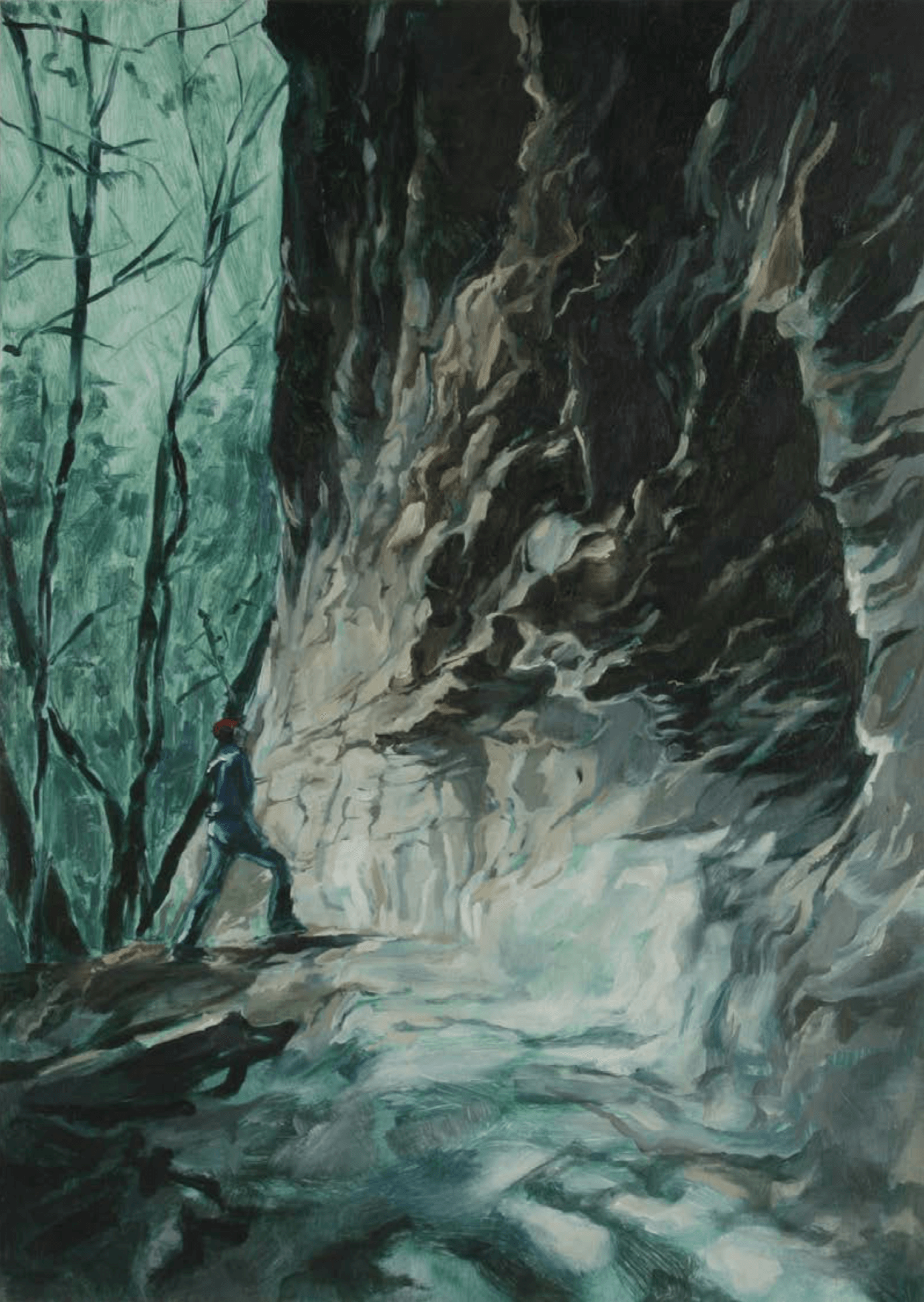
Workshop activities
In terms of composition, artists and graphic designers deal with the same set of factors (space, colour, texture) as well as portraying information or a message visually. To emphasise this point, Wendy gave us 5 minutes of sitting back to back with a partner, with one person describing an object in their sight and the other drawing it on a piece of paper. It was interesting to see how well people can describe objects and really understand their form and qualities.
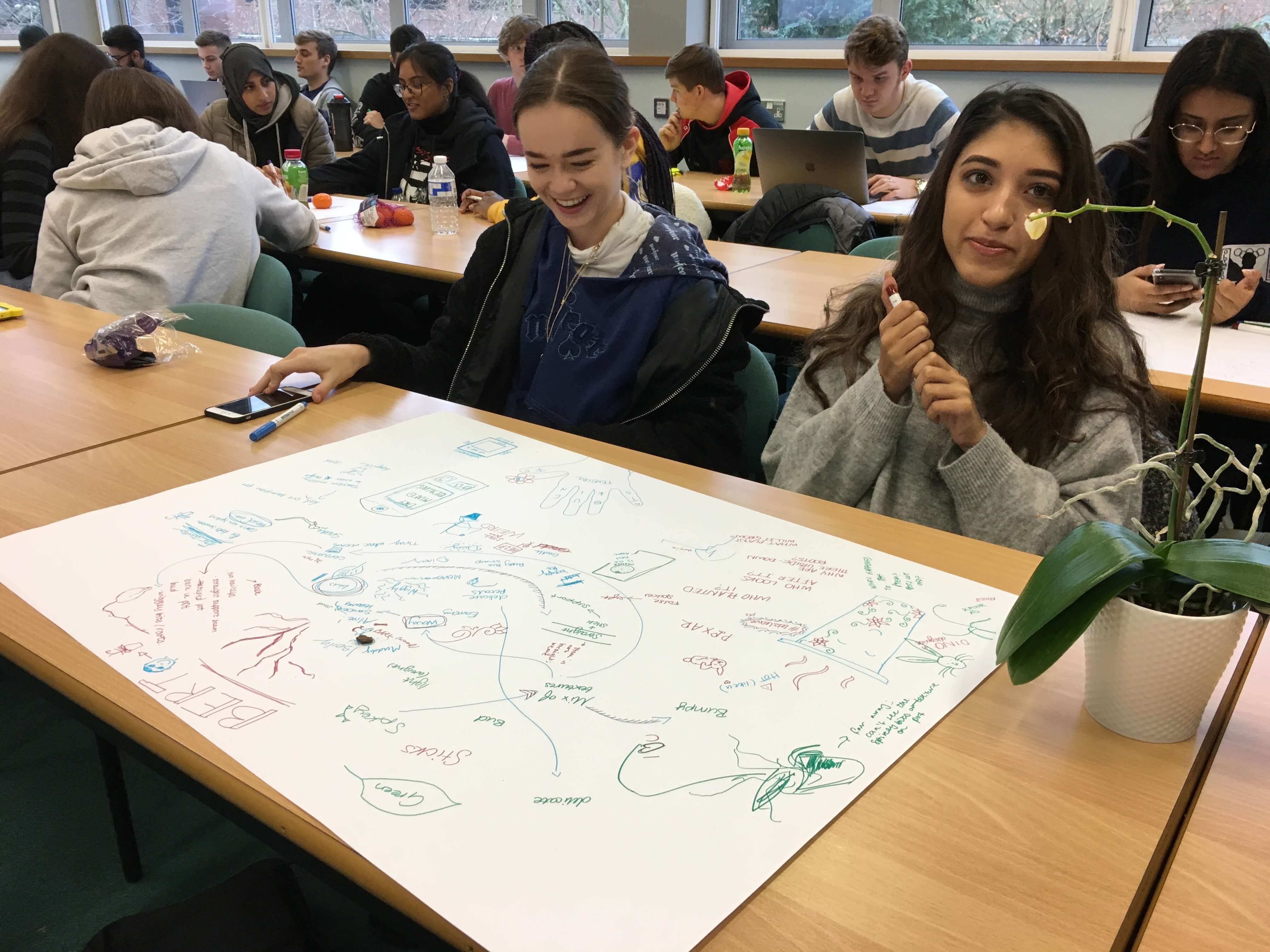
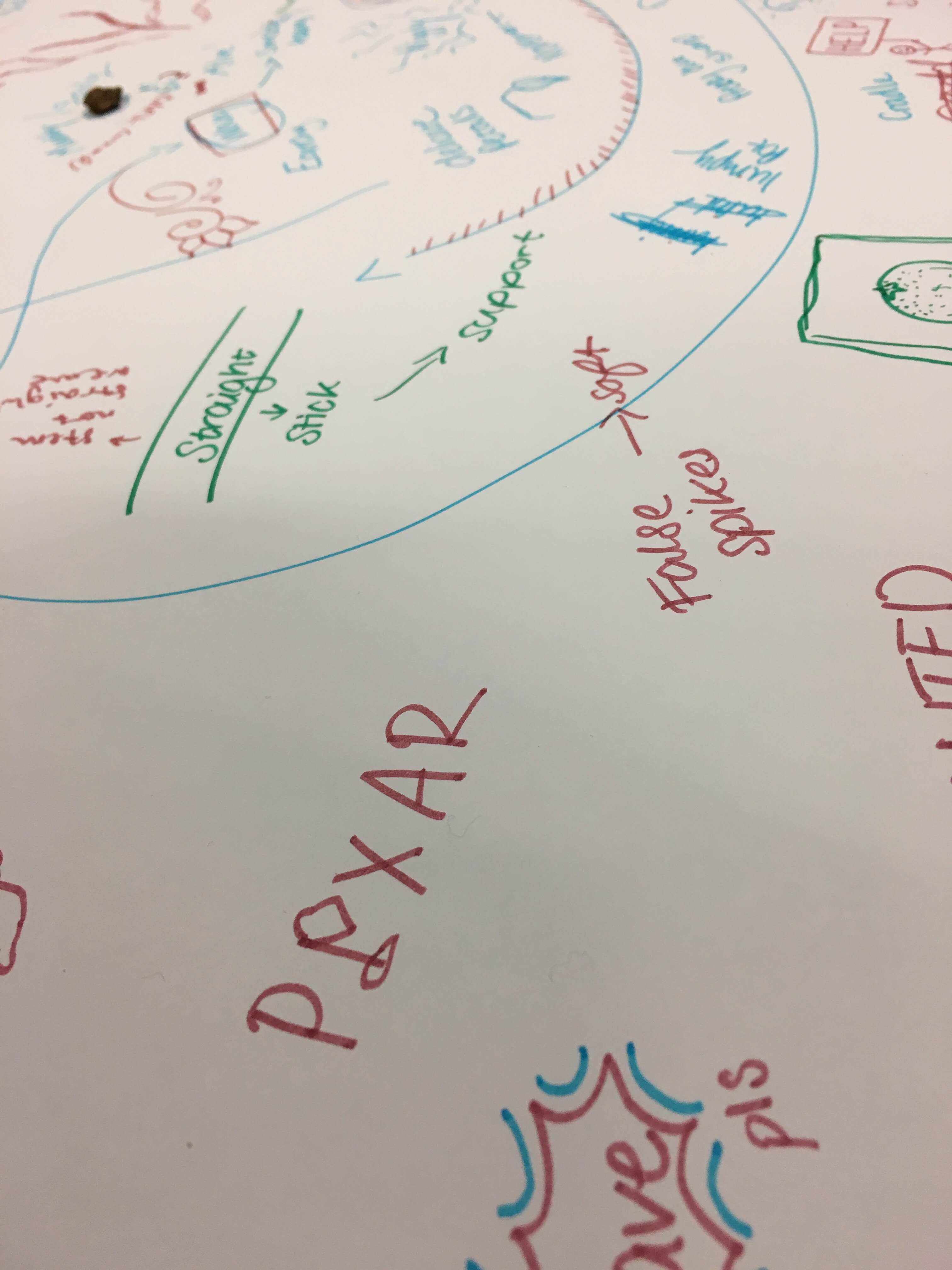
This lead us to analyse the term ‘attention’. What is meant by attention? Some students at the workshop claimed that the term could relate to attention to detail, a designers attention on the user or client , or the capturing of the user’s attention through design. These were all valid points but what Wendy emphasised was that attention is the giving of time to look at the complexity of your work. This took us on to the second activity which involved the observation of objects. Different types of objects, like a bag of oranges, an oar and a plant, had been scattered around the room. In groups of three or four, students were told to analyse these objects and describe them without actually stating what the object is.
We were then shown a 2-minute Peep Show from the exhibition, Mathematica, called Powers of Ten, produced in 1977. The video shows the close-up view of a man sleeping near the lakeside in Chicago, from one meter away. The landscape steadily moves out until it reveals the edge of the known universe. At a rate of 10-to-the-tenth meters per second, the film takes us towards Earth again, continuing back to the sleeping man’s hand and eventually down to the level of a carbon atom. The video, at a scientific level was quite hard to comprehend but the whole concept of looking at an object from up close and from far away was what lead us onto analysing the object in-front of us from different viewpoints. When looking at our object up close, we began to make observations that we hadn’t made before. Some of the objects were dirty and had cobwebs on them meanwhile others had a certain texture to them that hadn’t been noticed in the previous activity. From far away the shape and form of the object was noted as well as other details including the irregularity of the objects.
‘The workshop was extremely eye opening and made us think in depth about observation’
– Darcy Richmond, part 1

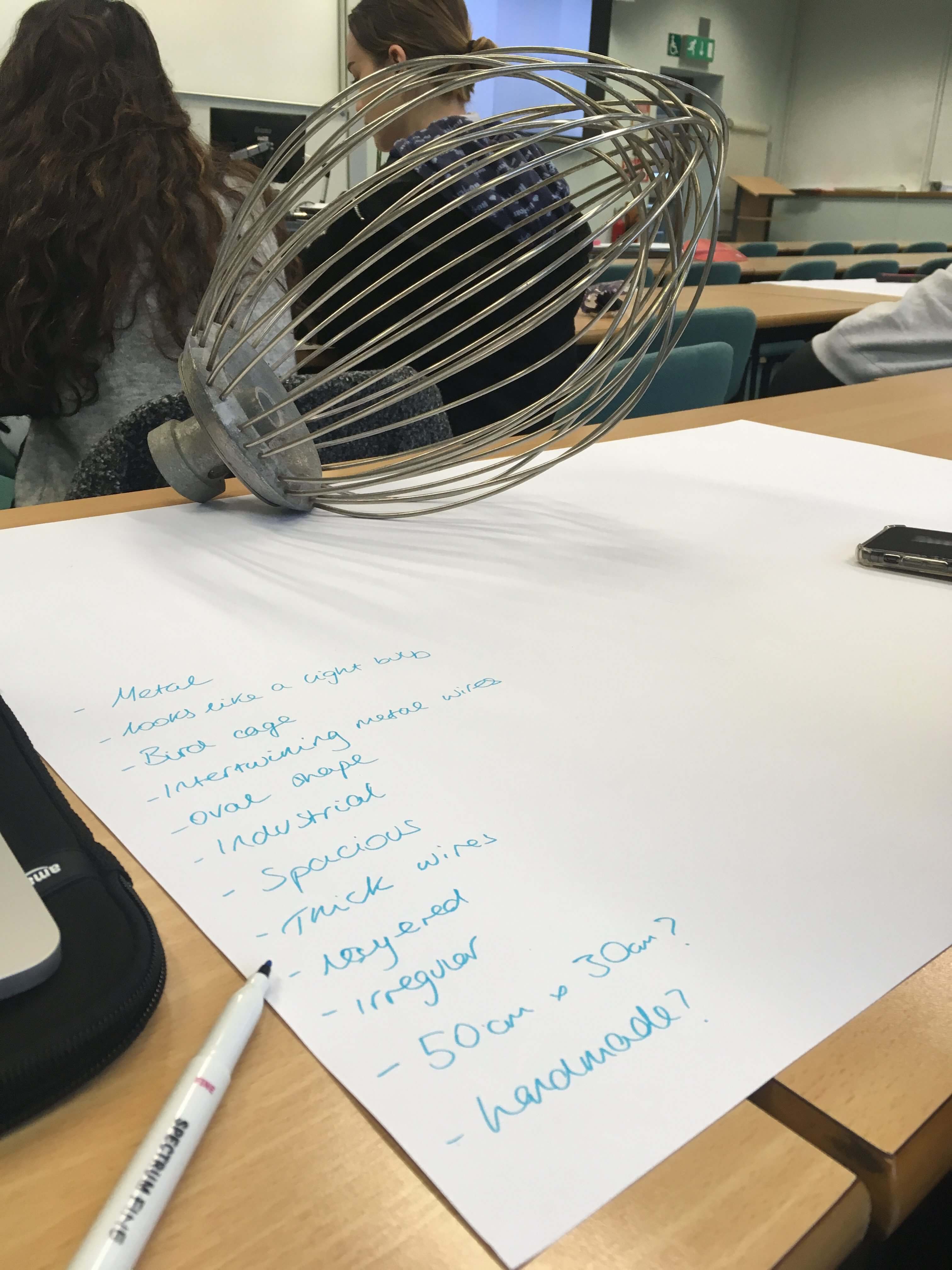
The perception of colour and texture
How artists interact with objects that they replicate in their paintings is extremely interesting and relevant to us as designers. Wendy explained how before designing we need to make observations on our client and look at the project brief from up close but also view it in the bigger picture. There are so many considerations that need to be made before actually understanding our brief and our user needs. This concept was embedded in a video by Derek Jarman ( https://vimeo.com/255954730 ). It’s title is Blue. There were no images, just the colour blue that would flicker throughout the video giving an atmospheric and physical effect. Jarman’s poem was read throughout this video and it was interesting because we learnt that Jarman’s eye sight had deteriorated over the years of his career which is a challenging obstacle especially for an artist. It made us think of the relationships we have to a colour. How we use language to describe a colour is different to how we perceive them. For example the terms ‘reddish-green’ and ‘yellowish blue’ are colours that we can name but they are difficult for us to imagine without actually seeing them. So how do u describe colour or texture? Learning to do this helps artists truly connect with the object or scene they are depicting in a painting. If we took a similar approach and analysed our users or our designs in such depth it would increase the level of understanding of what we have created and push us to make designs that have a great meaning and portray a message effectively.
Looking, differently …
Studying Graphic Communication at Reading means that we are often subjected to interacting solely with fellow designers including our lecturers, alumni of the department and outside speakers that work in the design industry. What was special about this workshop was that Wendy kindly gave up her time, as a lecturer from an art department, to take us on a journey into the world of art and show us how artist’s think about their work and come up with ideas. The workshop was inspiring and got all of our creative juices flowing. By the end of it we had learned diverse methods of thinking and observing which will help us look at design problems from a broader perspective, as well as from up close and in detail. We also learned about stopping and reflecting on our work in the way an artist would stop painting and look at their artwork from different angles and viewpoints to find ways of improving it.
Generally, graphic designers have a a particular way of analysing their own work and design problems. Wendy’s workshop showed that observation, attention and the analysing of objects can be done in many different ways, and that a range of techniques from outside our discipline might help enrich our practice as designers.

